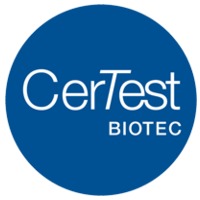Vitamin A Found to Induce Breast Cancer to Form Blood Vessels
By LabMedica International staff writers
Posted on 14 Aug 2008
Researchers have discovered that vitamin A, when applied to breast cancer cells, activates genes that can push stem cells embedded in a tumor to change into endothelial cells. These cells can then build blood vessels to link up to the body's blood supply, enhancing additional tumor growth. Posted on 14 Aug 2008
The investigators reported that their findings is a proof of principle of the new--and controversial--"vasculogenic mimicry” hypothesis, proposing that, when needed, tumors build their own blood pipelines. This is very different from the well-accepted role of tumor angiogenesis, when tumors transmit signals to blood vessels to grow toward the cancer.
The study's senior investigator, Stephen W. Byers, Ph.D., a professor of oncology and cell biology at Georgetown's University Lombardi Comprehensive Cancer Center (Washington, DC, USA), also reported that this study helps clarify why retinoids--natural or synthetic vitamin A agents--have had mixed results in treating cancer. "Finding that vitamin A may cause some breast cancer cells to form blood vessels brings up the rather disturbing notion that treatment with these drugs may actually stimulate tumor growth,” said Dr. Byers.
For example, use of beta-carotene, the most important dietary precursor of vitamin A and the chemical that makes carrots orange, has been found to increase lung cancer progression in a large clinical trial. Moreover, fenretinide, a synthetic retinoid, appears to decrease the risk of second breast cancers in premenopausal women, but increase the risk in postmenopausal women, according to Dr. Byers. "None of this means that people should avoid foods rich in vitamin A, or should refuse to take their vitamins. What led us to this study is that previous research on retinoids implied that they may be effective in a preventative setting, but may actually have a negative effect after tumor initiation and during progression.”
The researchers demonstrated that treating the cells with retinoic acid (RA) activates 81 genes that are associated with endothelial cells, such as vascular endothelial (VE) cadherin, which plays a role in binding endothelial cells together into a structure. When they then mixed the treated cancer cells with endothelial cells retrieved from human umbilical cord blood, structures similar to blood vessels developed within the tumor masses grown in culture. This makes sense, according to Dr. Byers, because vitamin A is known to be necessary for embryonic development precisely because it helps to differentiate stem cells, forcing them to become required tissue. In the same manner, taking too much vitamin A can result in birth defects.
Therefore, in cancer cells, vitamin A seems to be turning on cancer stem cells, allowing them to form the blood vessel tissue--needed most as tumors develop. Independent formation of these vessels is what has been proposed in the vasculogenic mimicry theory, developed by Mary Hendrix, Ph.D., of Northwestern University (Evanston, IL, USA), according to Dr. Byers.
"Like many scientists, I was not an advocate of this notion because it seemed too far fetched, but now, based on these findings and my years of working on retinoids and breast cancer, I am a believer,” Dr. Byers noted. "And what this study tells us is that treating stem cells that have retained the ability to become cell types other than breast with differentiating agents such as vitamin A may cause an inappropriate cell to develop--in this case potentially promoting tumor vasculogenesis and growth, which is not a desired effect.”
While there is much research yet to do to further define the molecular mechanisms by which endothelial cells form within tumors and assemble themselves into blood vessels, Dr. Byers noted that these findings open a new avenue to drug development. "Cancer drugs based on stopping host-derived angiogenesis have met with mixed success, and we think there could be new ways to target and halt the ability of tumor cells themselves to contribute to their own blood supply.”
The research was published in the July 16, 2008, online issue of the journal PLoS One.
Related Links:
Lombardi Comprehensive Cancer Center













